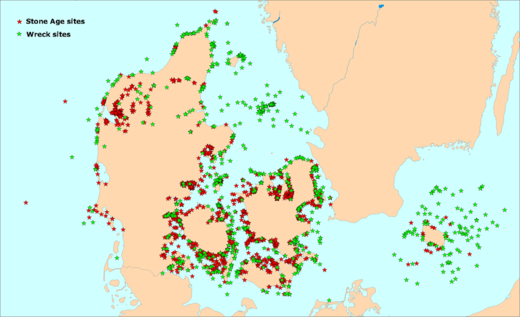Why SASMAP?
The need for SASMAP is based on the results from previous and current EU initiatives, the networks resulting from these projects and on-going research at the consortium’s institutions. The proposed pan- European consortium includes partners who have been involved in previously funded and successfully completed projects related to underwater cultural heritage, namely The MoSS Project, MACHU, BACPOLES and Wreck Protect. In addition, partners have also worked in The Baltic Gas Project and The Balance Project reflecting the interdisciplinary nature of the consortium. It also contains partners from the networking opportunities provided by the COST Actions IEO601 Wood Science for Conservation of Cultural Heritage (WoodCultHer) and TD0902 SPLASHCOST concerning submerged prehistoric landscapes. Many of these projects are directly related to the current ethos within maritime archaeology and conservation, namely to preserve underwater cultural heritage in situ, that is to say where it lies on or in the seabed. Within Europe this has been politically galvanised by the Valetta treaty (1992) and internationally by UNESCO’s Convention for the Protection of the Underwater Cultural Heritage (2001). Both these treaties advocate that, as a first option, the underwater cultural heritage should be protected in situ and, where possible, non‐intrusive methods to document and study these sites in situ should be used. This is understandable in terms of the underwater cultural heritage resource. UNESCO currently estimates that, “over 3 million wrecks are spread across ocean floors around the planet”. This figure does not include the numerous submerged landscapes (and archaeological sites therein), found around Europe as a result of postglacial sea level change.
It is financially prohibitive in either research- or development lead investigations to excavate, conserve and curate the many finds. In Danish territorial waters alone, it is estimated that there are 20,000 submerged settlement sites lying around the present day coastline and out to a water depth of 30 – 40 metres. The recently completed EU supported project WreckProtect carried out a cost benefit analysis for the costs of excavation, conservation and curation versus in situ preservation. A single large wooden wreck, such as the Mary Rose in the UK, has to date cost ca. 80 million Euros to raise, conserve and exhibit, whereas the physical in situ preservation of a similar sized wreck in Sweden cost around 0.07 million Euros.
Even though at first glance it appears to be several orders of magnitude more economical to preserve an archaeological site in situ, efficient and well informed management requires significant investment of resources to continually monitor and safeguard these sites. SASMAP will develop and assess tools, techniques and methods in order to develop best practice for the cost effective and successful investigation and management of underwater cultural heritage.


